The instructions are not easily digestible.
The Kidde KN-COSM-BA can detect smoke, fire, and dangerous carbon monoxide levels. Aside from its sensitive and accurate sensors, this device will make sure that you know what threat you're facing and, using voice announcements, will let you prepare and go with the correct response.
Ionization sensor, electrochemical sensor
85 dB at 10 feet
Temperature range: 40˚F to 100˚F
Humidity range: 10% - 95% RH
2 x AA battery
Voice alarm, Test/reset button, Flashing green and red LEDs, Low battery warning, Battery safeguard, Hush® feature
5 years limited
The optional pins will let you lock the batteries, preventing intruders from tampering with these detectors. The low battery alert will remind you to replace the battery before it is too late. The silence button enables you to temporarily silence the detectors.
The plastic housing is a little flimsy.
The Vitowell 420RCS3PACK includes three portable smoke detectors that fit houses and apartments about as much as they fit RVs and mobile homes. You can mount them onto ceilings or walls. The safety clip will not let you mount them before you insert the batteries.
Photoelectric sensor
85 dB at 10 feet
Temperature range: ~ 40˚F to 100˚F
Humidity range: ~ 10% - 90% RH
1 x DC 9V battery
Flash alarm indicator (red LED), Test button, Low battery signal, Safety clip feature, Easy to install with mounting bracket
5 years
The sealed lithium battery will last 10 years without replacement. The alarm mode will flash red if an alarm's sounded since the last time someone used the test button. The model starts working the second you attach the mounting bracket.
The sensor's a little too sensitive.
The Kidde i9010 fits commercial spaces as much as residential areas. The tamper-resistant design will prevent battery and alarm removal. The sealed housing will also prevent theft, making even high-density spaces where theft's a common occurrence a suitable option.
Ionization sensor
85 dB at 10 feet
Temperature range: 40˚F to 100˚F
Humidity range: 5% - 85% RH
1 x 3V lithium battery
Self-activation, Alarm memory, Hush mode, Test/reset button, End of life warning, Tamper-resistant, Flashing red indicator light
10 years limited
Incorporating high-quality ABS, the housing on these smoke detectors is made heat-resistant, withstanding high temperatures with relative ease. The automatic adjustment and compensation design learns the difference between steam and smoke and minimizes false alarms.
Changing the batteries is a headache.
Even though they're pretty cheap, there's nothing cheap about the 4 smoke detectors that the Lecoolife 0804 is packing. No, these detectors are polished almost to the max in all aspects, covering the basics but also making these devices more intelligent than the competition.
Photoelectric sensor
85 dB at 10 feet
Temperature range: ~ 40˚F to 100˚F
Humidity range: ~ 10% - 90% RH
1 x DC 9V battery
Automatic adjustment and compensation design, Flash red LED light, Test button, Low battery signal alarm, Safety clip feature
100% satisfaction guarantee
The device has been optimized to ensure that this device can detect not just noticeable smoke but also slow smoldering threats that generate very little smoke and heat, spending hours smoldering before bursting into flames.
The battery life is lower than advertised.
The Sobrovo GS528A is the best option for places where fire is an ever-looming threat. The model has received a UL certification, proving its sensitivity. You can choose between 1-, 3-, and 5-packs. The low battery alarm will warn you that the battery is about to expire.
Photoelectric sensor
85 dB at 10 feet
Temperature range: ~ 40˚F to 100˚F
Humidity range: ~ 10% - 90% RH
1 x DC 9V battery
Unit has passed the authoritative UL certification, Red LED flash light, Low battery warning
10 years
This site is a free online resource that strives to offer helpful content and comparison features to its visitors. Please be advised that the operator of this site accepts advertising compensation from certain companies that appear on the site, and such compensation impacts the location and order in which the companies (and/or their products) are presented, and in some cases may also impact the scoring that is assigned to them. The scoring that appears on this site is determined by the site operator in its sole discretion, and should NOT be relied upon for accuracy purposes. In fact, Company/product listings on this page DO NOT imply endorsement by the site operator. Except as expressly set forth in our Terms of Use, all representations and warranties regarding the information presented on this page are disclaimed. The information which appears on this site is subject to change at any time. More info
Kidde (KN-COSM-BA)
Smoke and Carbon Monoxide Detector
The Kidde KN-COSM-BA is a sophisticated device that does more than most smoke detectors but without raising the price as much as you would expect from its high-end disposition. First and foremost, what separates this device is that we're basically working with two units fitted inside one body, with one acting as a smoke alarm and the second unit detecting carbon monoxide. As you can imagine, this is not just a more convenient approach but also the one that does not interfere with the room's aesthetics.
Still, the best part might just be not that this device can detect both threats but that the voice alarm will announce the hazard type, making sure that you have the correct reaction to the hazard detected. The alarm shouts 'fire' when there's a smoke and/or fire hazard and 'warning, carbon monoxide' when the hazard has to do with CO.
Of course, as much as we appreciate voice alarms, we can also appreciate that they're not replacing flashing alarm indicators that smoke detectors are usually working with. When the issue is smoke= or fire-related, this device starts flashing red, accompanying the LED light with three long beeps and the aforementioned verbal warning. This pattern will repeat 'till the hazard's eliminated. The approach's the same when the issue has to do with carbon monoxide. When there are no issues, the model will be flashing green, except, you know, with less intensity.
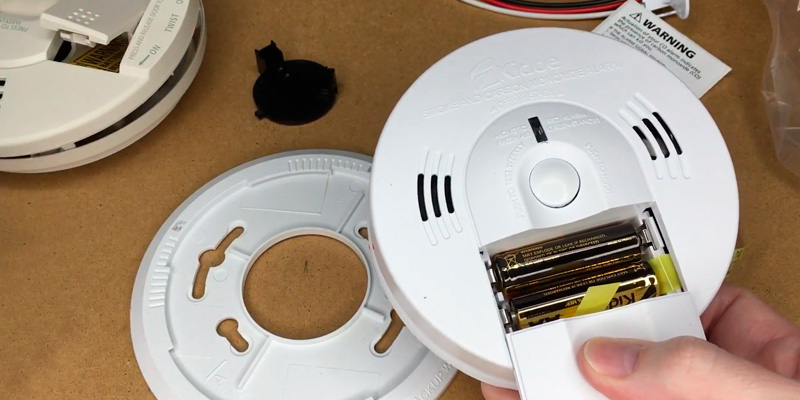
Hush Now
Some features here are not new though. There's an audio alarm that reaches 85 decibels at 10 feet, which's nothing new. There's also a test/reset button that will let you test the alarm circuitry, triggering the voice announcement as well.
Some are not new to the company's products but unique to smoke detectors in general. Before anything else, we're talking about the Hush® feature. With this one, you can temporarily silence nuisance alarms when you know that the threat is nonexistent. The device will even announce that the Hush mode is activated or canceled.
Counting these notable contributors, the instruction manual that comes with the device could use some improvement. As it is right now, the instructions are not easily digestible.
All things considered, there are not too many devices that can detect both smoke/fire and carbon monoxide, and even among this already exclusive club very few are as sensitive, precise, and affordable as the Kidde KN-COSM-BA. With this one, you can protect what matters most without purchasing and installing two separate detectors.
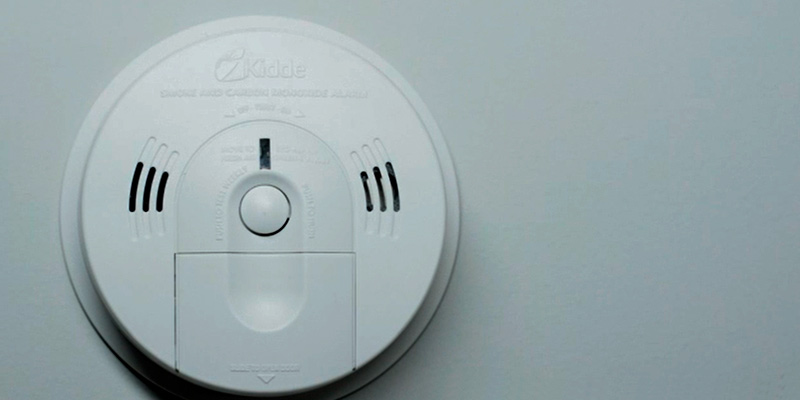
Additional Info
| Last updated price | $24.88 |
| Stock | May be out of stock |
| ASIN | B00PC5S0PA |
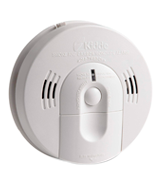
Vitowell (420RCS3PACK)
Packing Three Sensitive Detectors
The Vitowell 420RCS3PACK, in case the confusing name does not give that away, is packing three smoke detectors. They're compact and lightweight devices that you can install practically anywhere, making them portable too. Considering that you're paying less than 30 bucks here, we're not surprised that the plastic housing on these smoke detectors feels flimsy. But, apart from the housing, nothing gives away the detectors' budget disposition. No, the mounting brackets that come with them enable easy installation, hence the whole portable part.
Where the environmental requirements are concerned, this package is not trailing behind its more expensive competition. To elaborate, the detectors work with temperatures ranging between 40 and 100 degrees Fahrenheit and with humidity levels between 10- and 90-percent relative humidity. They're utilizing photoelectric sensors, which usually takes less time to detect a threat than ionization alarms.
Generally speaking, these detectors start with the test button, not the most important part but the one that they're seldom complete without nowadays. Needless to say, this button will let you test the alarm, something that we always recommend doing initially as well as every month or so. Once the red LED light has flashed for 30 seconds straight, you can rest assured knowing that the alarm's running normally.
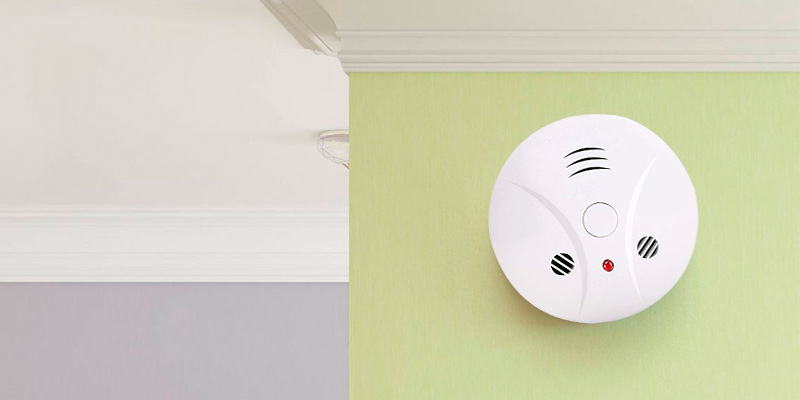
No Tampering
When the threat's detected, these devices start blasting an alarm that goes above 85 decibels, making sure that it is heard from a distance. Besides the alarm, these detectors also use LED light indicators, flashing red when there's a threat (pardon the rhyme). The difference between this flashing and test flashing is that, when smoke or fire is detected, the flashes are more rapid and there's a pulsating alarm to them.
Matching the competition, these smoke detectors come adopting low battery alerts, reminding you when you should change the battery, while the battery guard will make sure that the battery's placed inside the alarm. Sliding open the battery drawer, you can easily replace the one DC 9V battery these detectors rely upon. When you're done, the power indicator will blink, confirming that it's receiving power. Last but not least, the detectors also come with optional pins. Using these pins, you can lock the battery and make these devices tamper-resistant.
In short, the Vitowell 420RCS3PACK is offering excellent smoke detectors that are pretty cheap yet plenty effective. You can mount them onto ceilings and walls at home as well as in an RV or mobile home.
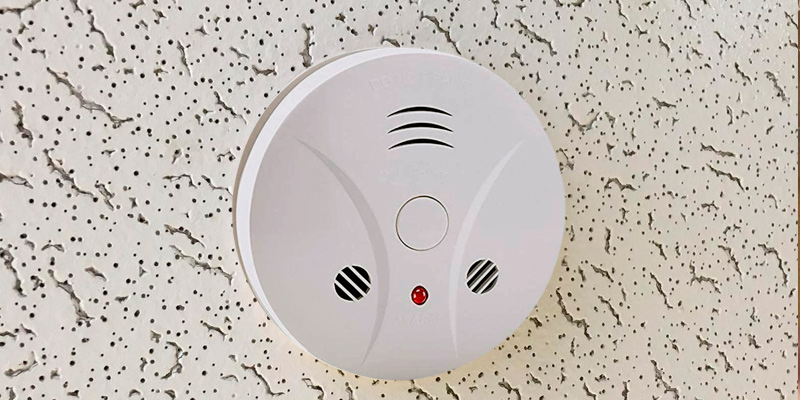
| Last updated price | $33.99 |
| Stock | May be out of stock |
| ASIN | B07CWHTTF1 |
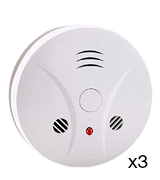
Kidde (i9010)
Everything is Automatic
The Kidde i9010 is not quite as impressive as the company's previous unit but the model has its moments as well. To begin with, this device automatically activates the moment you attach it to the mounting bracket, so you don't have to worry about forgetting to activate the alarm. Pull-tabs, switches, this model ditches them all, everything's automatic here. Also, when the bracket's attached, the unit comes tamper-resistant, preventing battery or alarm removal so that you can relax knowing that unauthorized entry will not be quite as easily possible. Plus, the sealed construction prevents theft, accommodating high-density dwellings.
More often than not, ionization sensors are not as accurate or fast-acting as photoelectric sensors. The opposite's the case this time around though. In fact, the biggest problem we have with this device is that it is too sensitive, meaning that the alarm might occasionally sound due to shower steam or you cooking something juicy. Still, we'll take an occasional false alarm over a detector missing an actual hazard any day of the week. What we'll also take is the company's End of Life Warning feature that will chirp an alarm every ~40 seconds, telling you that the battery should be replaced (usually happens 10+ years from the moment you activate the detector).
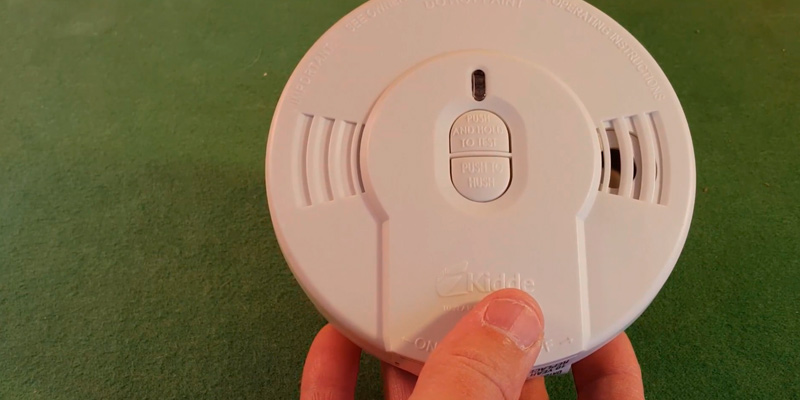
Temporary Silence
When you're working with Kidde smoke detectors, certain features come without saying. Normally, these features include an alarm mode, with the device flashing LED alerts when the alarm's sounded since the last time you used the test/reset button. The more frequent models also include the Hush® feature. Also known as the Hush mode, this feature lets you silence alerts. Of course, you cannot activate this mode before you put the unit in the alarm mode to make sure that you do not forget about activating this temporary silence mode. In other words, the model features 4 modes: standby, alarm, hush, and memory.
Looking at the specs, the model fits the same mold that most smoke detectors are fitting these days. The alarm caps at 85 decibels, ensuring that it is heard without deafening you. Acceptable temperature ranges from 40 to 100 degrees Fahrenheit and humidity levels from 5- to 85-percent relative humidity.
Long story short, high-intensity dwellings are the ones that will benefit from the Kidde i9010 the most. But an average household will also have no problems with this sensitive smoke detector.
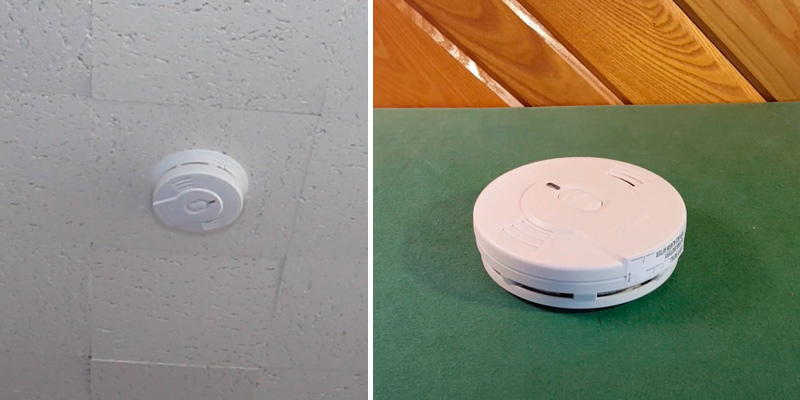
Additional Info
| Last updated price | $17.44 |
| Stock | May be out of stock |
| ASIN | B00PC5SX98 |
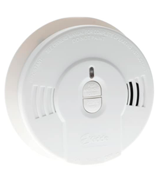
Lecoolife (0804)
Affordable Yet Thorough
The Lecoolife 0804 is an affordable package yet, nevertheless, a thorough one. Considering that you're paying less than 9 bucks per detector here, it would make sense to expect something shoddy. But shoddy is the last word we would use to describe these detectors. No, made from heat-resistant ABS that easily withstands high temperatures, the units are tough and durable, so you can put them practically anywhere you want; bedrooms, kitchens, bathrooms, different, corridors, commercial spaces like hotels and restaurants, offices, you name the place.
Sure, they're not flawless but, from what we can tell, there are no major problems with the detectors' operation. The problems arise when you start replacing batteries, with the almost inaccessible battery compartment making the process a nightmare sometimes. But, again, operation-wise, we have no complaints.
Looking at the installation part, putting these detectors in place is a pretty easy challenge. Turn the unit (counterclockwise) and remove the bracket. Then, hold the bracket in the position that's specified in the instruction manual (in the Recommended Locations section), mark the holes with something (a pencil will do the trick), and drill them with a 5-mm (3/16-inch) drill bit. Tap the supplied plastic grommets into these holes, insert the battery, and you can mount the unit.
As always, before you start using the device, you can test the alarm with the test/reset button. When you're testing it, the sound pattern is short, flashing with 1.5-second intervals to let you know that the alarm's working but also that this is a drill and not an actual threat that the detector's displaying.
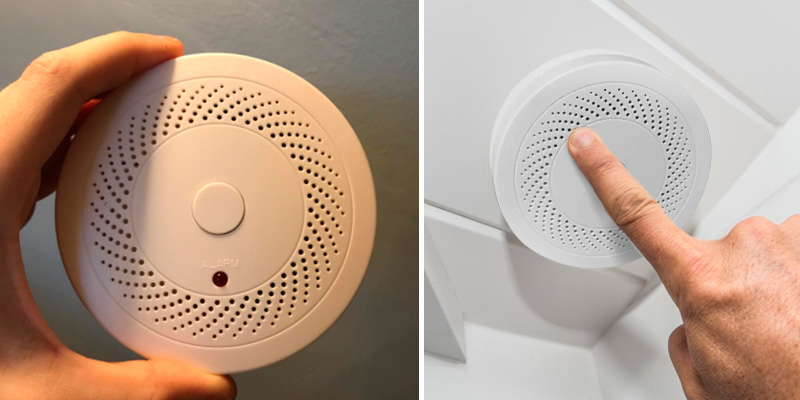
Automatic Adjustment and Compensation
While everything that we've outlined above contributes, what tips the scales here is the automatic adjustment and compensation design. The issue with most smoke detectors is that they're almost always too sensitive or not sensitive enough. These ones solve this issue via MCU microprocessors that learn the difference between steam and smoke and make sure that false alarms are eliminated down the road or, at the very least, minimized.
Removing this piece fro the equation, we're not left with anything special, which's fine. While there's nothing interesting about the low battery signal alarm or the safety clip feature, they're an always welcome addition to the team.
To put it differently, as long as you're fine with the fact that replacing the batteries will be a headache, these Lecoolife 0804 smoke detectors should prove right up your alley.
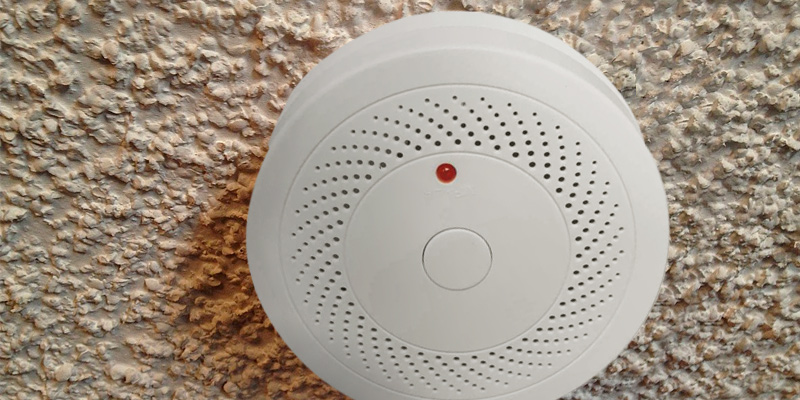
| Last updated price | $39.99 |
| Stock | May be out of stock |
| ASIN | B07G5V3Z7L |

Sobrovo (GS528A)
Optimized Photoelectric Approach
The Sobrovo GS528A is a photoelectric fire alarm, which are generally more sensitive than ionization alarms but this one was also optimized. Sharpening its sensors, the people behind this device have 'taught' its circuitry to detect slow smoldering fires that generate almost unnoticeable smoke and little heat, meaning that they usually spend hours smoldering before producing flames. The model has even passed the strict UL certification test, instilling confidence that its sensors will not miss the faintest threat.
Not unlike most smoke detectors, when the device senses combustion, an LED light starts flashing red in rapid succession (one flash every second). Besides rapid flashing, the model starts pulsating with an alarm that reaches 85 decibels at 10 feet, making sure that you cannot miss the siren. The alarm will stop once the smoke's gone (or the test button's released).
As sensitive as this device is though, smoke detectors start sounding an alarm only when they detect combustion or smoke, meaning that they cannot detect heat, flame, or gas (unless we're talking about those models that also detect carbon monoxide leaks, like the unit's that's leading this list). Needless to say, this is not the product's downside, this is just something that we can say about most detectors. Its downside is that the DC 9V battery that's shipped with the unit will not last as long as advertised, which means that the model burns through batteries with increased expediency, so to speak.
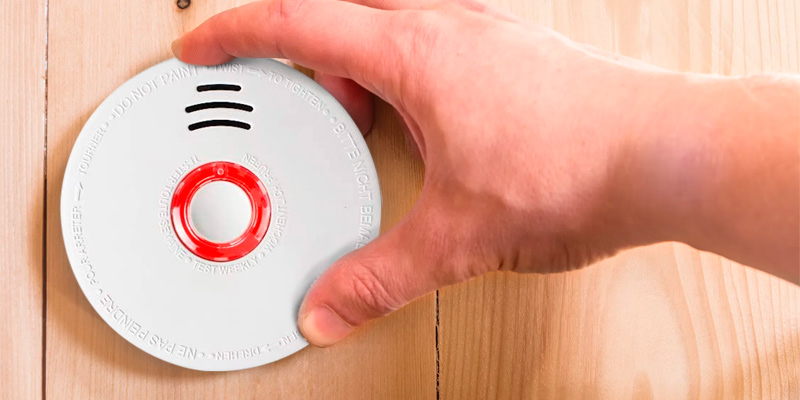
Sound an Alarm
Borrowing from the playbook that's deployed across 9/10 smoke detectors, this one also comes equipped with a test button. The folk at Sobrovo recommend testing the device once a week, holding the button at least 5 seconds so that the alarm will sound and you'll know that the detector's working. The same button will also let you use the so-called Hush mode that silences unnecessary alarms for ~8 minutes.
Even though we're not crazy about the model's attitude towards batteries, burning through them with an almost burning passion, we like that there's at least a low battery warning that will notify you when the battery's approaching expiration. Serving as a notification will be an intermittent chirping sound accompanied by red LED flashes every 32 seconds.
To sum up, we can recommend the Sobrovo GS528A to people who deal with spaces where fire is an actual ever-looming threat and not just something that can but likely will never happen.
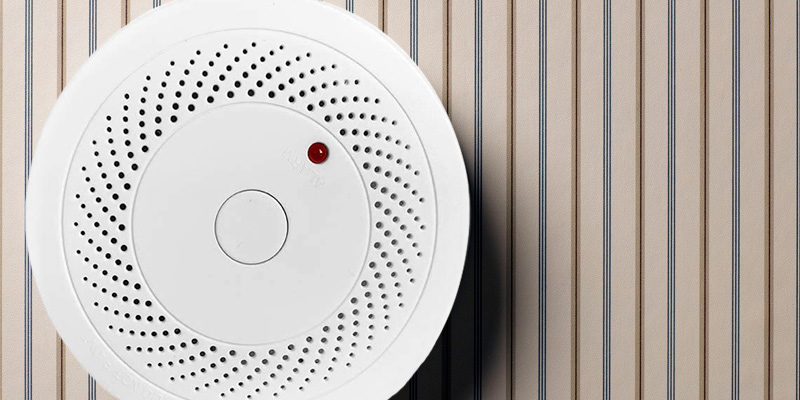
| Last updated price | $29.49 |
| Stock | In stock |
| ASIN | B07BY1968J |
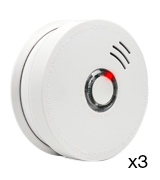
What Is a Smoke Detector?
There is no doubt we must pay much attention to the things capable of saving our lives, health, and property. Smoke detectors are no exception as they can protect you and your family from fire, smoke, and gases.
A smoke detector is actually a device designed to detect smoke, fire, poisonous gases, and warn people of an emerging threat. When the sensor detects fire or gas, it instantly triggers an alarm horn notifying people about the danger. Therefore, it allows taking immediate action and you have plenty of time to put out the fire at an early stage.
To provide the necessary level of safety and monitor the situation properly, smoke alarms for home use are usually installed on the ceiling or walls in the places where the risk of fire is the highest. Basically, these places are located near stoves, boilers, and electric wiring. Some smoke sensors can be connected to the central fire warning system and if the fire is detected, a warning signal is instantly transferred to the rescue service.
If you think your home requires a complex protection, we'd like to draw your attention to home security systems. For smarter home safety, you may also need a security camera.
What Features to Compare
Type of Sensor
If you want to choose smoke detector, it's reasonable to check the type of sensor each model has. Basically, there are two primary types of smoke detectors:
- photoelectric. Sensors of this type quickly detect smoldering fires as the emitted particles are from 0.3 to 10 micron. A photoelectric sensor detects thick white smoke very fast but it is much slower in detecting a volatile black smoke (emitted during the burning of plastic or rubber).
- electrochemical. These sensors allow measuring the concentration of gasses (such as hydrogen, carbon monoxide, etc.). These sensors are necessary for houses with gas heating, for example.
Keep in mind that the detection of carbon monoxide should be a priority as this gas poses a significant threat to people's lives. Since CO is invisible and odorless, it can quickly spread around your home and that's why electrochemical sensors are indispensable.
Any smoke detector has a sound alarm that goes off when smoke is detected. Apart from the sound, some models have light indicators.
In addition to this, there are some supplementary sensors that fire alarm can include - motion, occupancy, humidity sensors. These components make a detector more functional and contribute to its versatility.
Operation and Power Source
Another crucial feature of a fire detector is its operation and power source. We recommend you to select a model matching the weather conditions in your state or region. If your choice is right, the sensor won't react each time the weather changes. More importantly, some detectors boast a really wide range of operating temperatures, which makes that really versatile. Smoke detectors are mainly attached to the ceiling and walls by means of screws, so you can choose the place where they will be most efficient. The compact size of a smoke detector makes it practically invisible in a room.
Any appliance requires a power source. Most smoke alarms are battery-powered but some of them require the connection to the mains. Moreover, there are models that support both options; no need to say, such smoke detectors are the most functional.
Special Features
Finally, pay attention to the special features that make these appliances unique. For example, some of them can be controlled remotely by means of smartphones or Wi-Fi connection. A notification is sent to your cell phone if the alarm is triggered and you will know about the danger no matter where you are. Thus, it will be possible to take an immediate action.
Moreover, in some models, you can switch the sound signal off by a simple waving of your hand. Some smoke detectors have displays showing the battery charge level and other information. Special convenient buttons allow making calibration and self-testing. Finally, there are models that have a low battery level warning, so you will be able to change it on time.
Are Smoke Detectors Even Necessary?
Most people know that smoke detectors are important and that fire is no joke, right? Yet, let's be honest, there are more premises without these detectors or with outdated models than there are those that have them up and running everywhere they should be. So, why are these devices as important as they are and why do people neglect them anyway? Well, for starters, most people believe that they can escape fire without third-party assistance. The problem with this logic is that fatal home fires are usually (>50%) occurring at night, while the residents are sleeping. As you can imagine, smoke detectors can wake you before the threat becomes fatal but, when you're asleep, smelling the smoke and waking up without detectors is not something that most people can do.
The second problem is that some individuals believe that smoke detectors are ineffective and we cannot blame them. Truth be told, they were pretty ineffective back in the days and even today there are models that have issues delivering on the promises they make. Still, even budget models ($10-15 a piece) nowadays are usually quite good at catching early smoke. The National Fire Protection Association tells us that you're 50% more likely to survive a fire at home if you have smoke detectors in every room, which is not nothing, to say the least.
So, what do we mean when we say 'outdated models'? Well, different smoke detectors have different lifespans, not unlike all electronics. But, generally speaking, you should be replacing them every 10 years or so. See, the problem here is that people believe that smoke alarms sit idle 'till smoke's present. This could not be further from the truth though. No, they're working every minute, every second, monitoring the premises 24/7. Ionization smoke detectors go through 3.5 million monitoring cycles during the suggested 10 years, while photoelectric alarms use lights that also operate 24/7, checking for smoke particles.
Contrary to the somewhat popular opinion, hard-wired and battery-operated models are equally affected by age, so this is not something you should be taking into account when figuring out how much time the battery has left.
Every room though? Why, yes, every room. Small studio apartments can get away with one but, generally speaking, you need one unit in each bedroom, one outside the bedrooms, one in the attic, and one in the kitchen. Bathrooms are situational though. Also, attics do not always make the list. The thing is that even the more expensive models are usually pretty bad with extreme heat and cold. They're not great with dust either, so unheated attics and garages might not accommodate certain smoke detectors. Apart from that, as you can imagine, they're not the best fit for spaces where smoke's a common occurrence (shisha bars, for example).
Finally, some people forego smoke detectors because they have heat detectors. We would not recommend doing that though. The reason is simple - even the worst smoke detectors respond faster to ordinary residential fires than the best heat detectors.
Sources:
1. How to Choose a Smoke Detector, wikiHow.
2. How to Choose the Best Smoke Alarms for Your Home, Kidde.
3. Smoke and CO Alarm Buying Guide, Consumer Reports. February 2016.
4. Joanna Pearl How to Buy the Best Smoke Alarms, Which?
5. Chris Barnes Smoke Alarm Buying Guide, choice. August 28, 2014.
6. Kimberly Kurimski Best Smoke Detector: Ionization, Photoelectric Or Dual Sensor? A Secure Life. May 12, 2016.
7. How to Buy a Smoke Detector, ConsumerSearch. April 2016.
8. Timothy Dahl How to Buy a Smoke Alarm that Provides the Most Protection, WORKSHOP. September 9, 2015.
9. B. ONeill Not All Smoke Alarms are Equal: Knowing the Difference Could Save Your Life, The Allstate Blog. April 3, 2013.


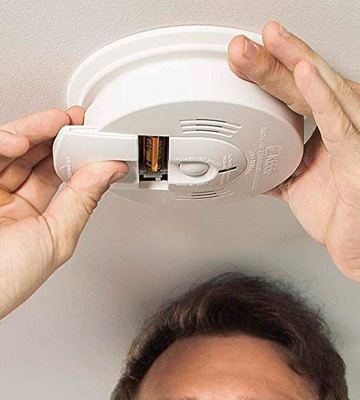
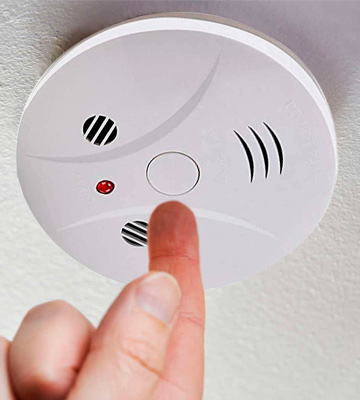
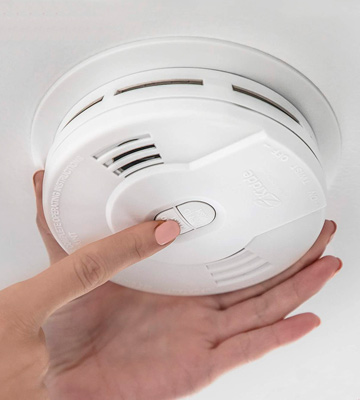
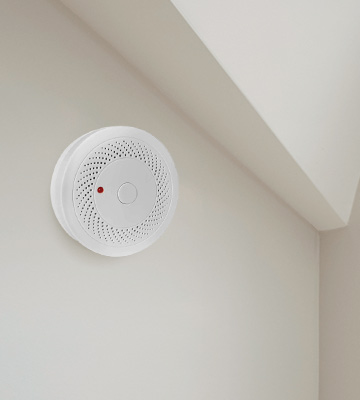
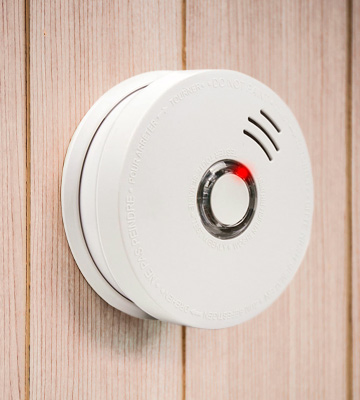

Your comment was successfully sent
Error! Please try again later